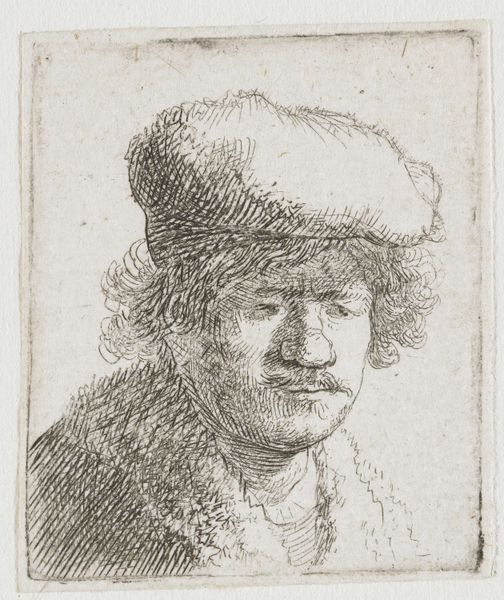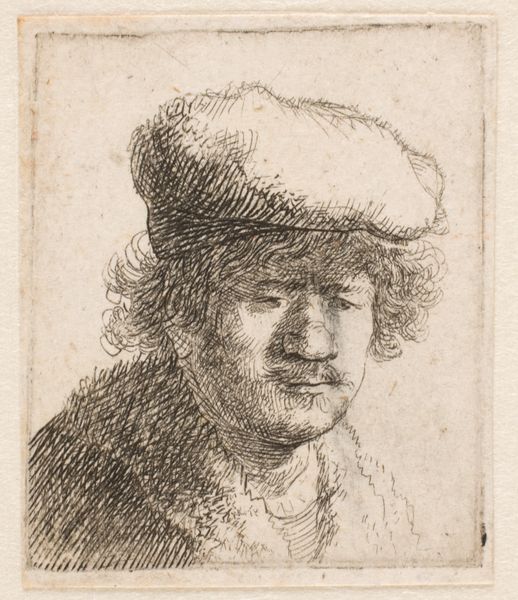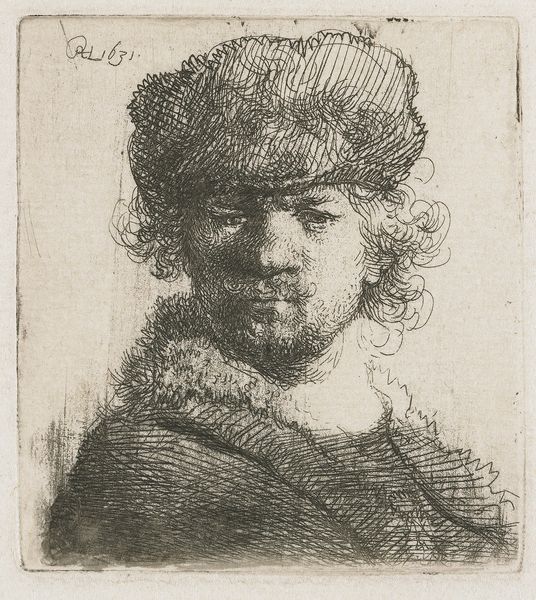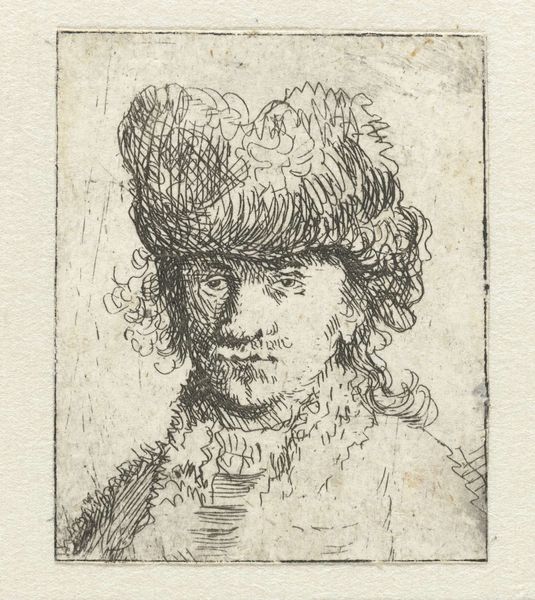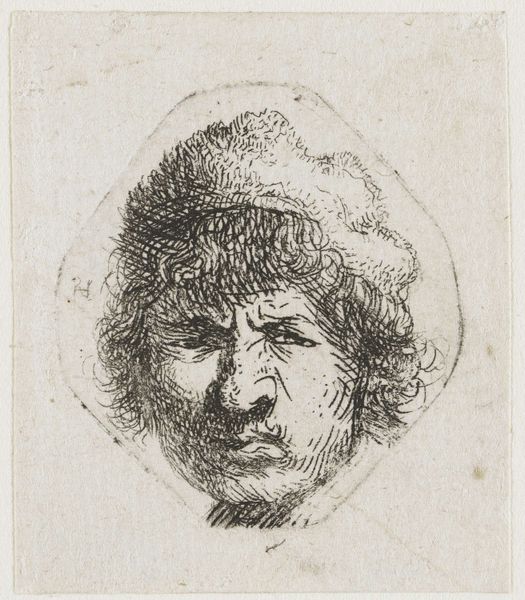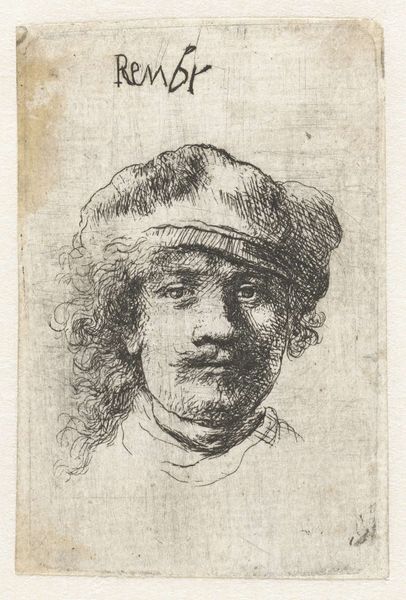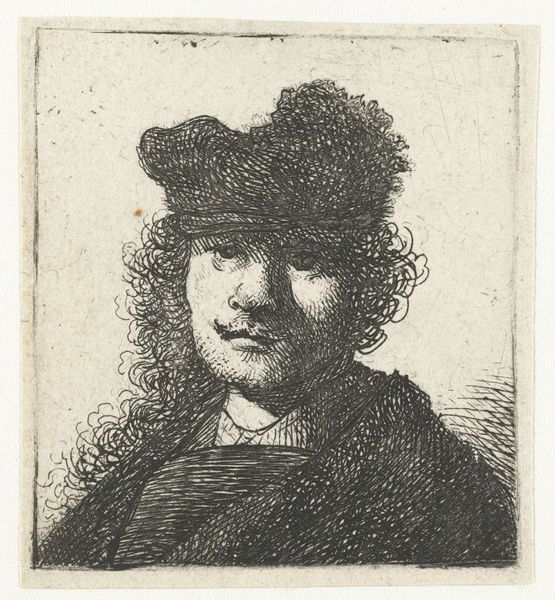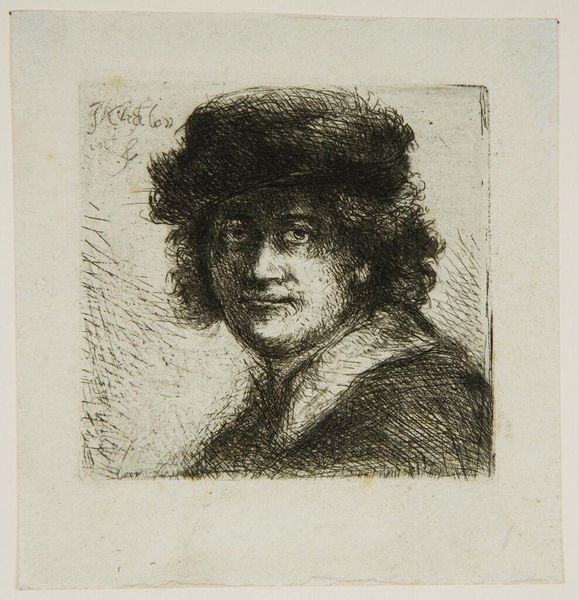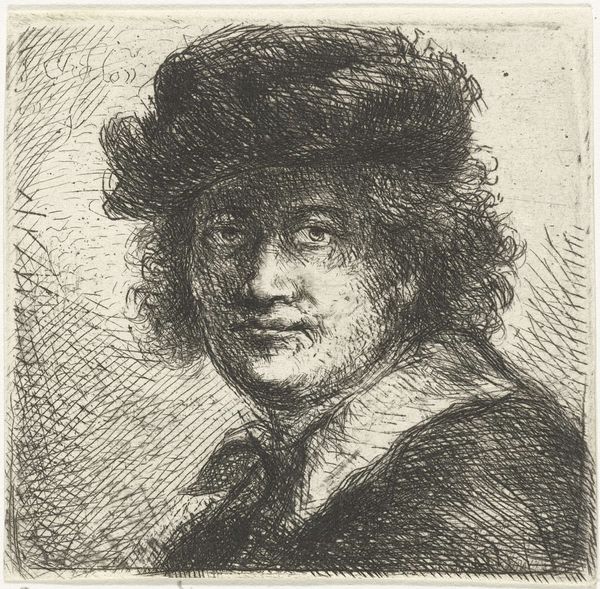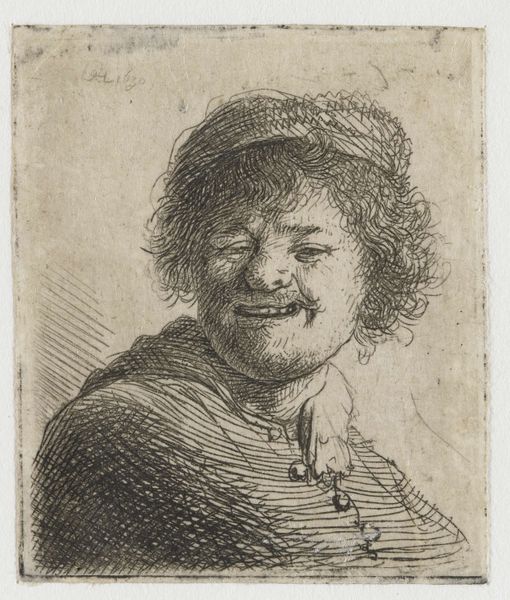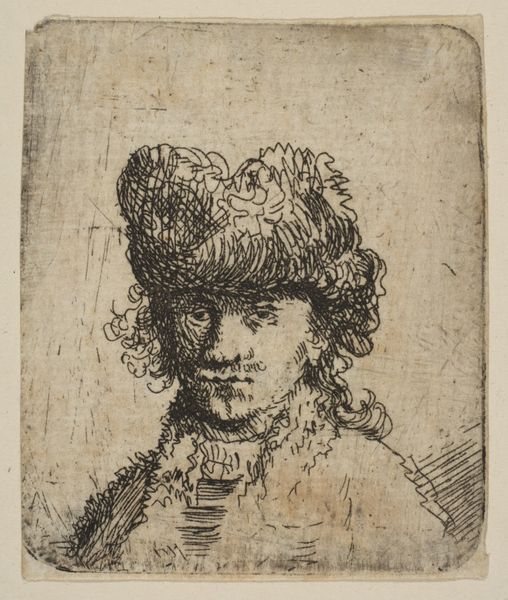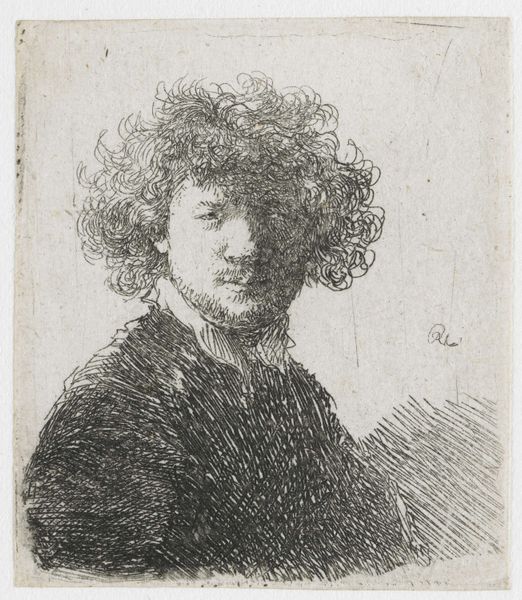
print, etching, intaglio
#
portrait
#
self-portrait
#
baroque
# print
#
etching
#
intaglio
Dimensions: height 50 mm, width 43 mm
Copyright: Rijks Museum: Open Domain
Editor: Here we have Rembrandt van Rijn’s "Self-portrait with cap pulled forward," an etching dating to around 1630, housed at the Rijksmuseum. It's small, intimate. What's striking to me is how immediate it feels despite being from so long ago. What do you see in this piece, especially considering the socio-political context of Rembrandt's time? Curator: Beyond the personal, consider the context. Self-portraits in the 17th century were tools of self-promotion but also social navigation. Rembrandt, positioning himself both as artist and 'everyman', negotiated a shifting art market. The 'pulled forward' cap suggests both a deliberate concealment, and an intimacy that was groundbreaking for self-representation at the time. How might Rembrandt be playing with his public image here, and for what ends? Editor: That's fascinating! It's like he's crafting a very specific persona, playing with ideas of accessibility and artistic genius simultaneously. I hadn't thought about the market forces at play. Curator: Exactly. Etchings themselves democratized art; prints could circulate widely. Rembrandt controlled his image, his brand, in an era of emerging celebrity. Think about how artists controlled their own narratives during the period, and who his audience would have been, compared to the patronage system only a generation or two earlier. It's more complicated than it seems at first glance, isn’t it? Editor: Absolutely. It re-frames the portrait in my mind. It makes me think differently about other 'intimate' portraits. Curator: Precisely. Examining art through a historical and socio-political lens gives new insights into even the most seemingly simple self-representation.
Comments
No comments
Be the first to comment and join the conversation on the ultimate creative platform.

